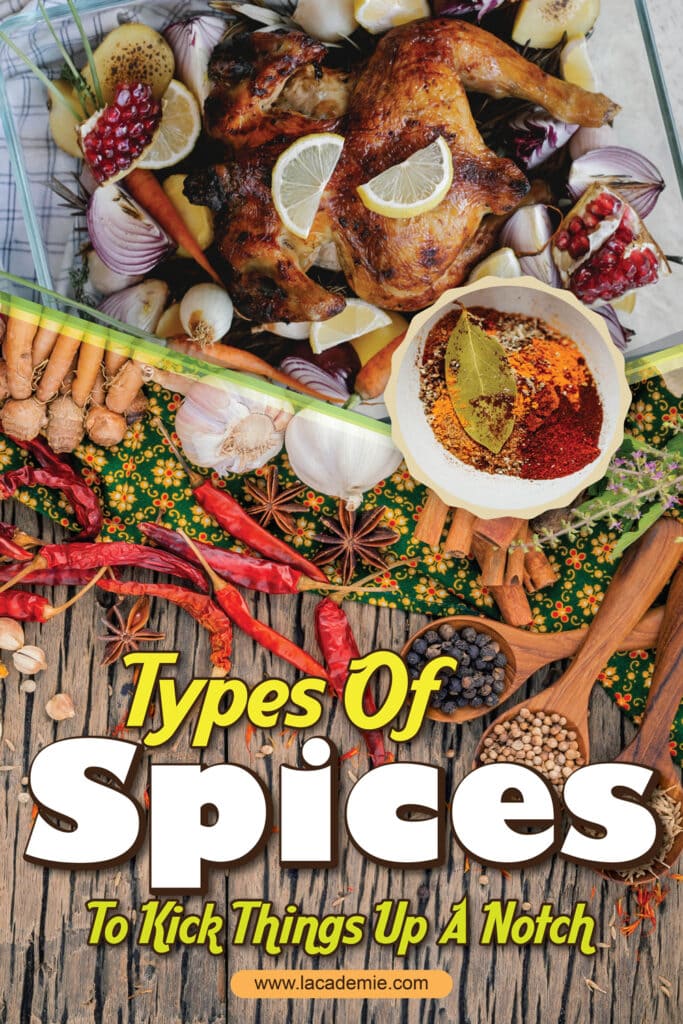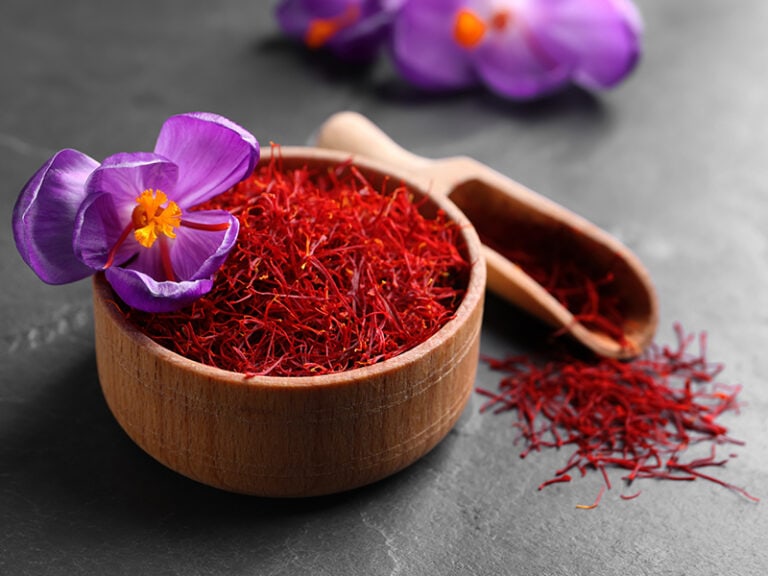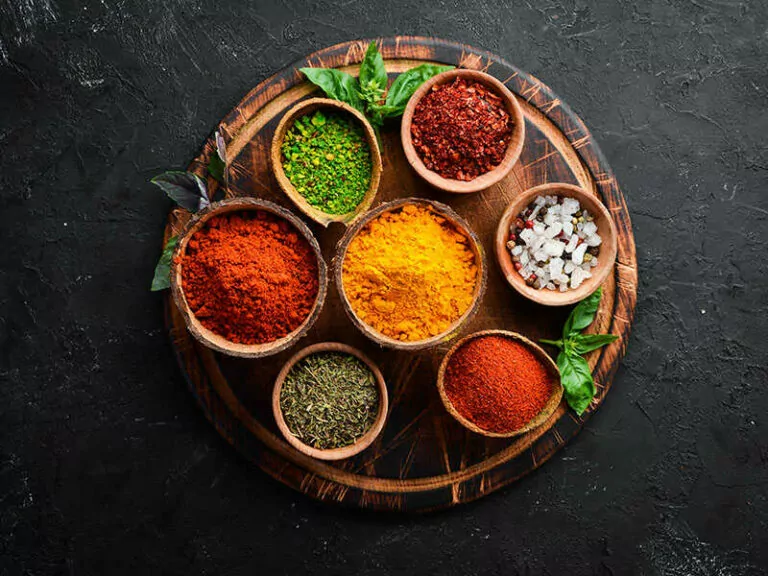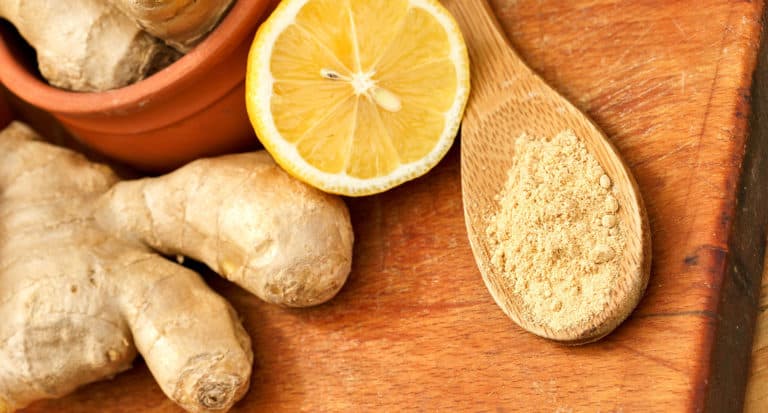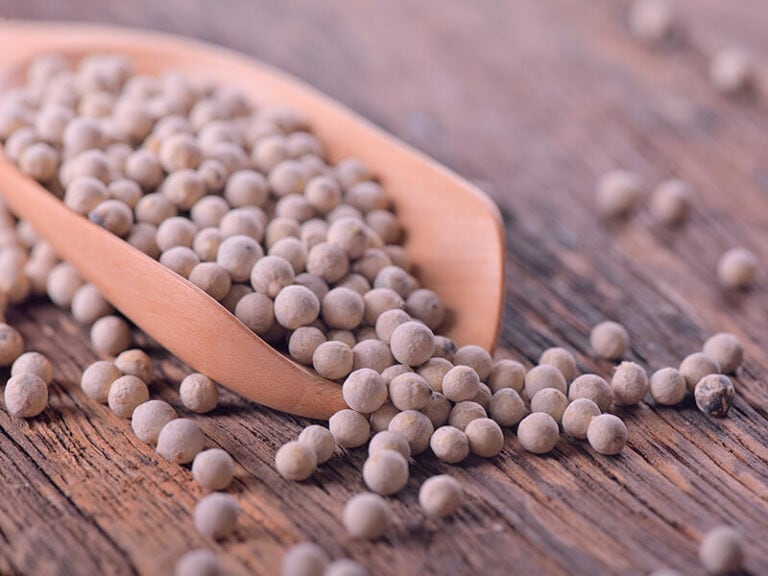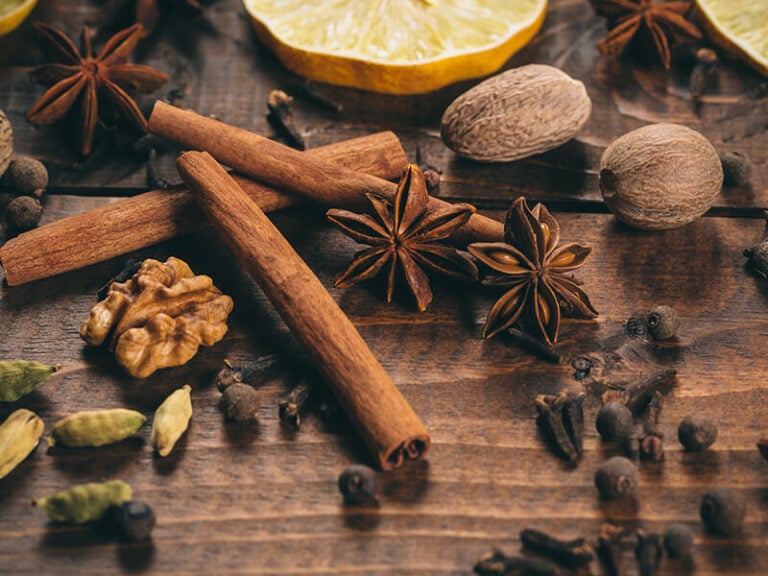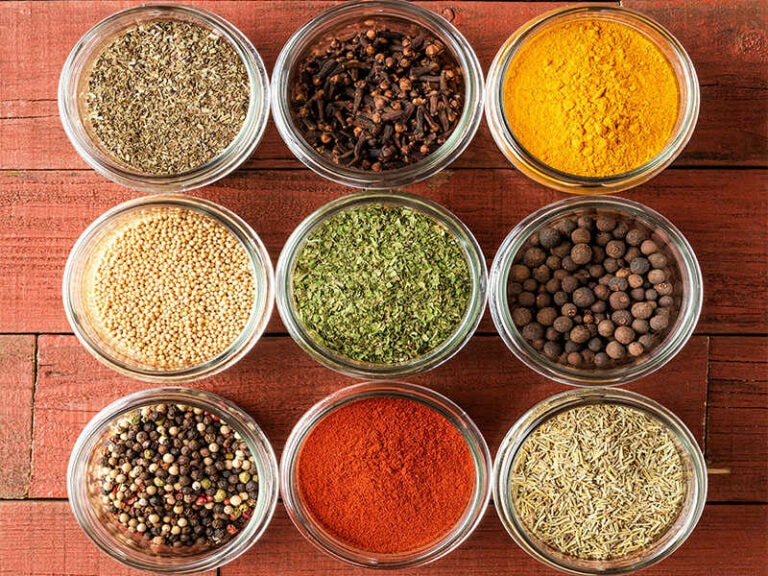Let’s start with this astonishing fact: did you know that there are about 200 types of spices at the moment? Thus, it’s no fun to cook with just salt and pepper, even if you live for the motto “less is more.”
When it comes to the world of spices, the more, the merrier. Today, I’ll show you some of the best spices to add to your kitchen rack, and rest assured your meals will become even more delectable from now on. Don’t hesitate; let’s scroll down right away!
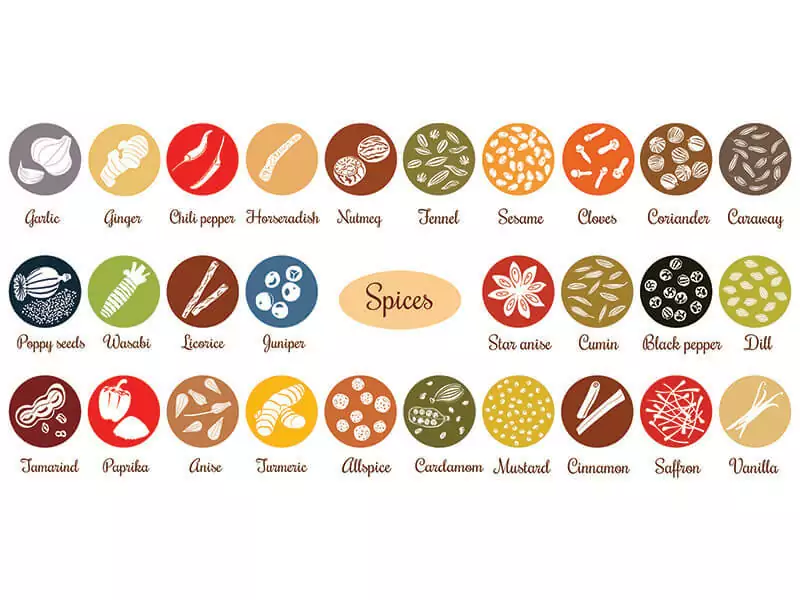
Spices, A Flavorful Addition For Your Recipes
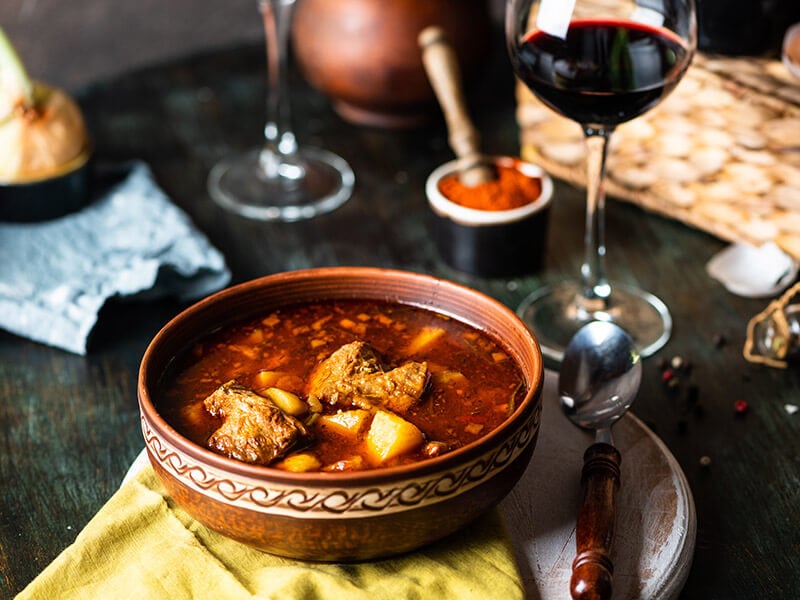
Spices are a game-changer. Thanks to their addition, your dishes receive extra flavor depths and a tantalizing smell that makes every stomach growl. Some spices can even enhance the curb appeal of your dishes with their colors, such as saffron or paprika.
Spices are also nutritious, though not too significant, as they are often used moderately. They are high in antioxidants, which can prevent the risk of critical health conditions like cancer or ischemic heart.
Given that, you want to use spices more frequently from now on. But what to use, and how should you use it? The following section will give you the answers.
Spices 101: Most Popular Spices You Cannot Miss Out
As mentioned, there are somewhat 200 varieties of spice in this world. They are categorized based on several factors, such as plant parts used or tropical requirements. But here, spices are classified according to their flavor profile, which is perhaps easier for you to follow.
Hot Spices To Take Your Dishes To The Next Level
If you are ready for some heat, dive into this post. Here, a wide range of hot spices, including cayenne pepper, hot paprika, and fennel are available, and I’m confident they will leave your throat with irresistible scorching flavors!
1. Cayenne Pepper
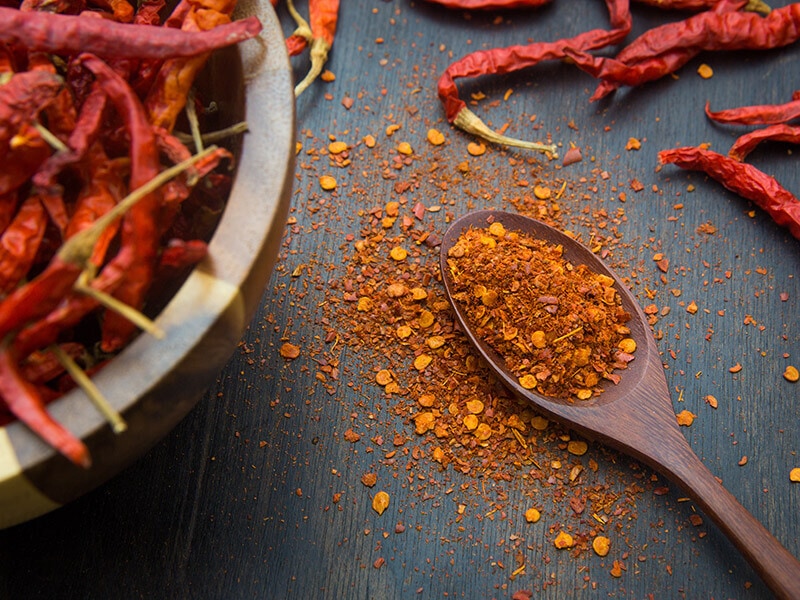
Speaking of fiery heat, you can’t forget cayenne pepper – a moderately hot chili pepper kind. It is a cultivar of Capsicum annuum and is believed to originate in French Guiana. Once harvested, the fruits are dried, then ground into powder, and sometimes blended with other spices.
With 30,000-50,000 Scoville heat units, cayenne pepper will lend big, intense flavors to your dishes. You can add a pinch to your soup, hummus, and seafood recipes. It also pairs nicely with drinks like lemonade and hot chocolate.
2. Black Pepper
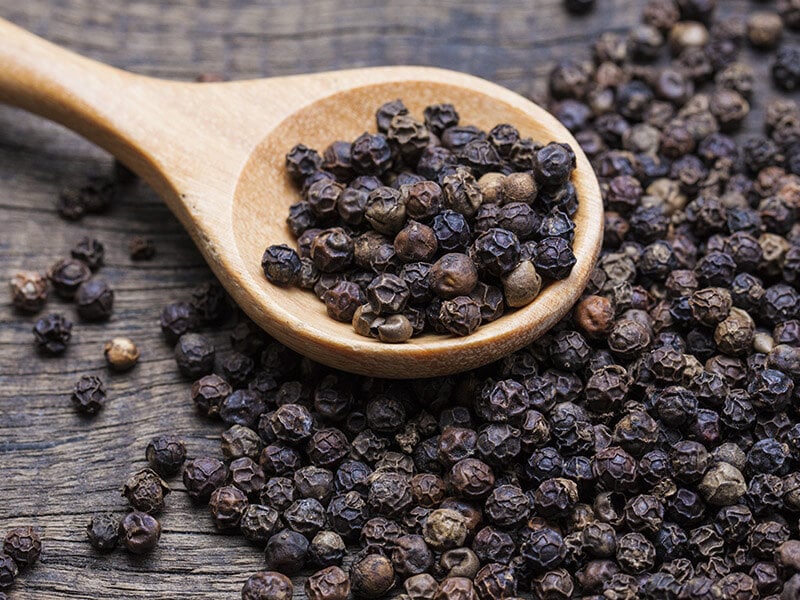
Black pepper is often compared to its white counterpart, but to tell the truth, everyone knows the winner is the former. Along with salt, it is a pantry staple with great versatility, adding just the right amount of heat to your recipes.
Native to India, the spice is believed to be one of the earliest to have ever existed. While the ground version is easier to store, you may find it loses its potency over time. Meanwhile, you don’t have to worry about whole peppercorns since they can remain fresh much longer.
Dive in here and find out why pepper is in everyone’s kitchen.
3. Ginger
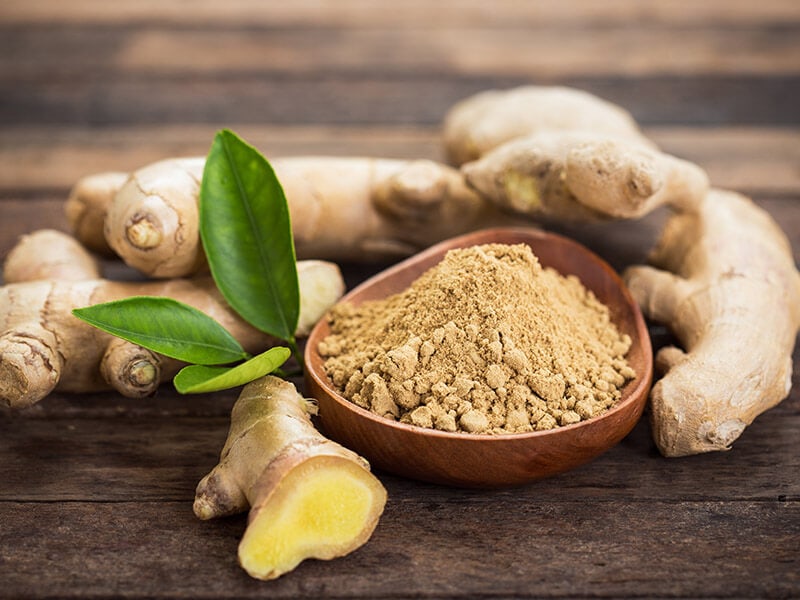
Much to people’s surprise, the spice is not exclusive to savory dishes. Ginger is also used in desserts and drinks, providing sunny warmth with peppery, slightly sweet nuances. Not only do they taste good, but they also provide you with endless health benefits.
While it’s true that ginger is mainly found in Indian cuisine, the spice also plays a vital part in Caribbean and Asian dishes. Besides its fresh and powdered form, there’s also candied and pickled ginger.
Ginger comes with tons of health benefits; let’s find out what they are!
4. Mustard Seed
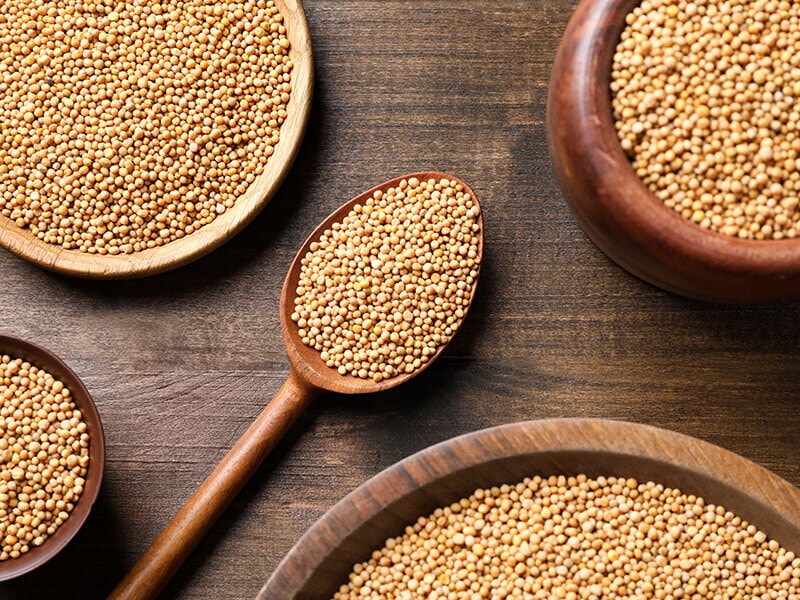
One of the greatest alternatives for fenugreek seeds, mustard seeds are another spice made for spicy eaters. At first, it goes easy on you with a mild, nutty flavor, but as soon as you take a bite, an explosion takes place.
These small, round seeds are of North African origin, but they are now popular in many parts of the world, including Asia and Europe. You can find it in any grocery store, and they should keep it well for about 3-4 years.
5. Paprika
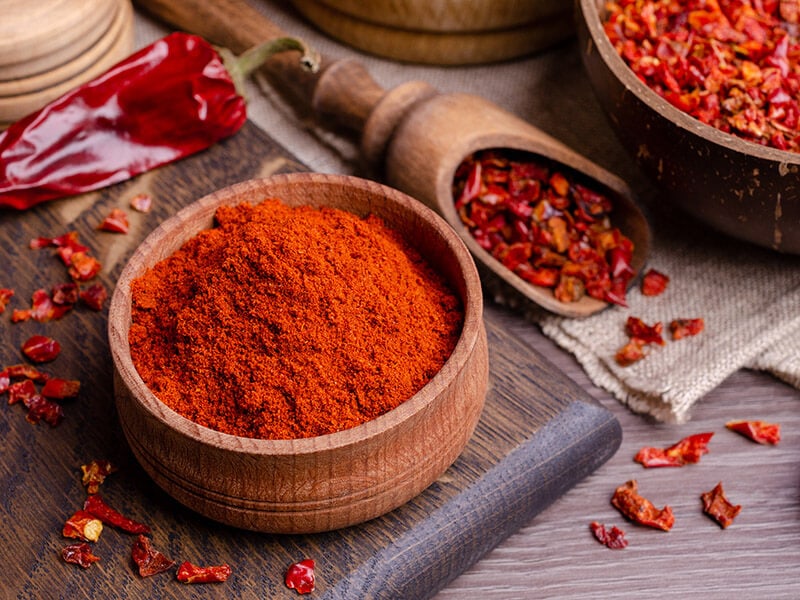
Paprika can elevate any dish with its exquisite flavors. It comes in three variants: hot, sweet, and smoked, with the first being the most popular while the latter does not pack much heat. Paprika can be substituted with other spices in its family, like cayenne or poblano peppers in a bind.
Just a sprinkle of paprika, and any dish can turn into a crowd-pleaser. To elevate the taste of this spice, you can quickly toss it in a pan with oil. While the spice has common uses in savory recipes, feel free to incorporate it into your favorite desserts and cocktails.
Discover where paprika comes from with this informative video.
6. Red Pepper Flakes
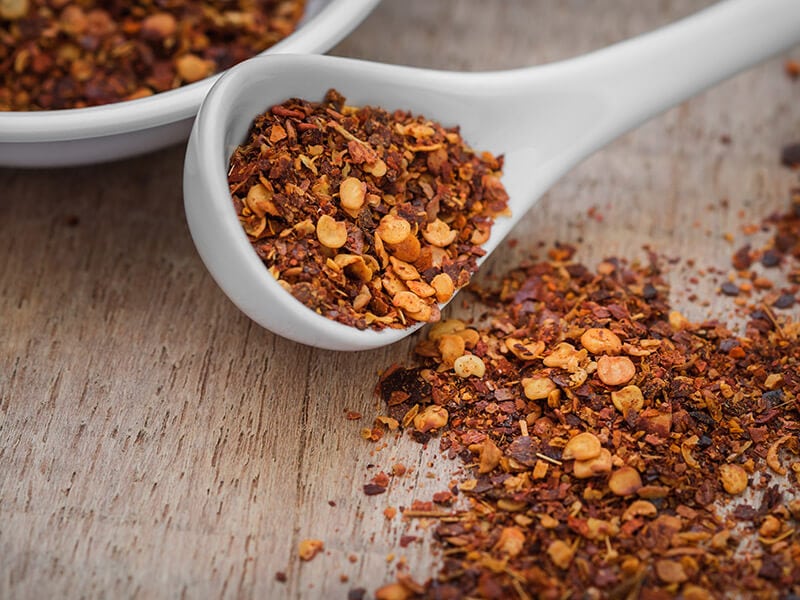
Also known as crushed red pepper, this spice was mostly associated with Italian dishes such as pizza, but its reputation has gone far and beyond. Just a shake or two, and even the most boring midweek dinner can turn into something scrumptious.
Also, there’s this confusion about red pepper flakes and chili flakes that you want to clear up. While the former is a combination of more than a type of pepper, the latter is made up of one type and can set your taste buds on fire more quickly. But you love that, don’t you?
7. Chili Powder
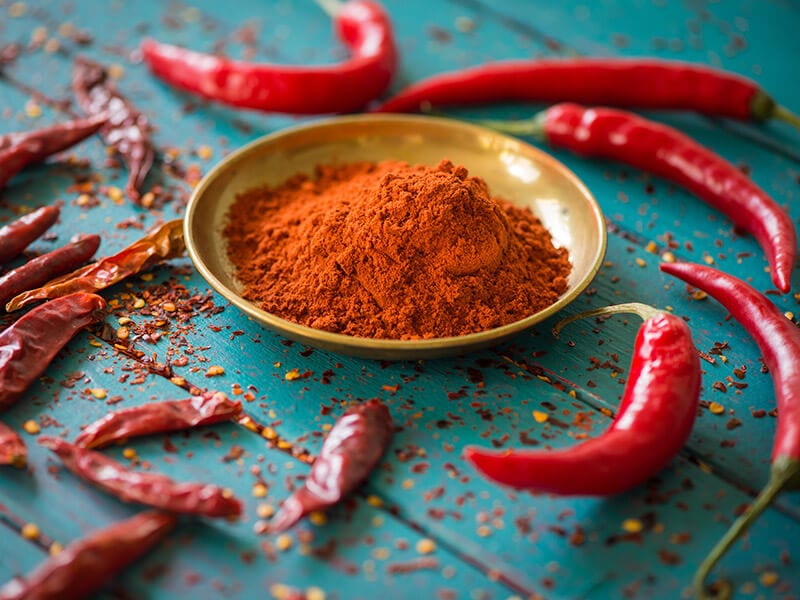
Chili powder is not just the ground version of red pepper flakes. It sometimes contains spices like cumin or garlic powder, so there are at least a hundred varieties of it with varying levels of heat.
Admittedly, it’s blazing hot yet still a far cry from cayenne pepper powder. Should you want to make an alternative for chili powder, hot sauce and cumin powder can be just the ticket. You won’t likely tell the differences apart unless you are that one spicy food enthusiast.
Wonderful Mild Spices For Those With A Sensitive Palate
Not everyone likes to be dripping in sweat while eating. If such hot spices make you feel that way, consider these mild alternatives. They range from mildly sweet to deeply earth, bringing your dishes to another taste dimension. Check them out!
8. Cinnamon
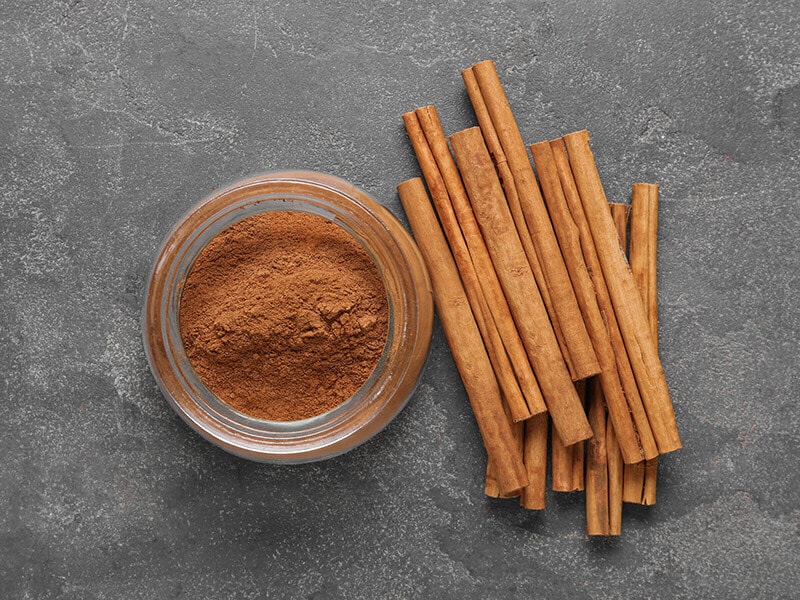
In the past, cinnamon was highly valued and typically served as a gift for the monarch. It is a perennial favorite in many kitchens nowadays with countless applications. You can lend your roasted items some warmth or put a fragrant twist on your desserts with cinnamon. Anything is possible.
Cinnamon is available in two forms: stick and powdered, the latter more frequently used because it is convenient. Speaking of its variants, there’s Ceylon cinnamon (the regular kind), along with Korintje, royal, and Saigon.
Here’s the explanation of why Ceylon cinnamon is so costly.
9. Cardamom
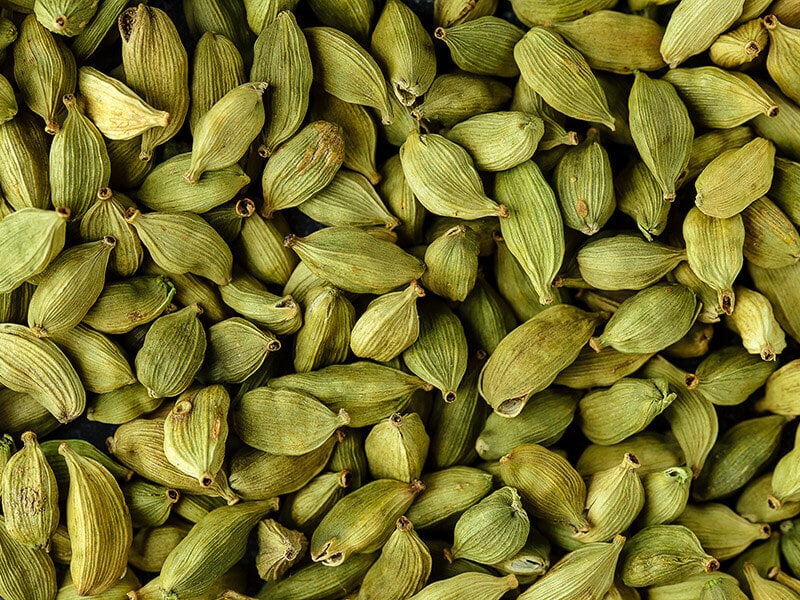
Cardamom has many stand-ins, but rest assured nothing comes close to this spice, which is regarded as one of the most expensive of its kind. The reason lies in the painstaking harvest method in which only 1 kilogram of cardamom is harvested from 6 kilograms of raw pods.
Some will tell you there are three types of cardamom (green, black, and white), but the white is, in truth, a bleached version of the green variant. With its herbal warmth underpinned by a hint of smokiness, people love to add a pinch of cardamom into red meat, rice, and so on.
10. Allspice
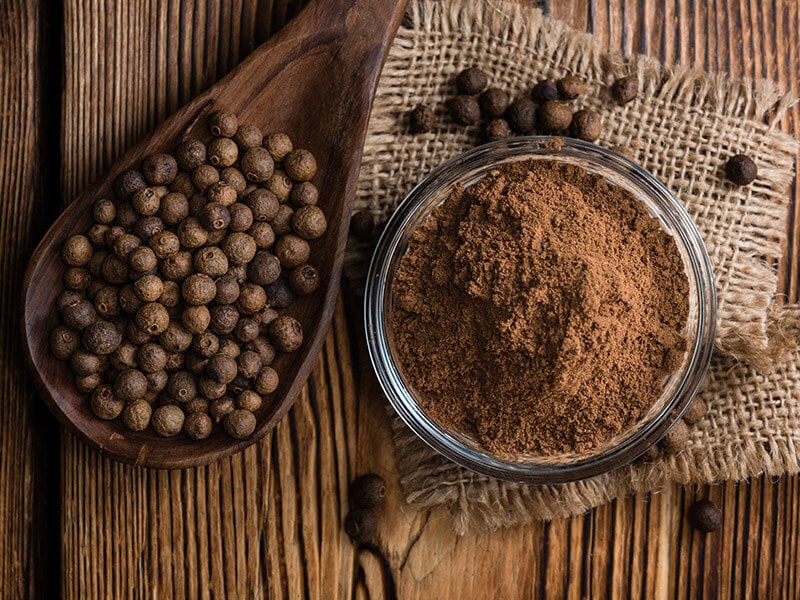
When the leaves start falling off the branches, you know autumn is here. And what’s a better way to start this season than whipping up some desserts with allspice and its substitutes like pumpkin spice mix? The answer is nothing, evidently.
Decades ago, the Mayans did not put allspice into its maximum use. The spice served as an embalming agent or a chocolate flavoring. Until 1621, the British had access to it and named it “allspice,” which refers to its strong aroma resembling cinnamon, clove, and nutmeg.
Clear your confusion about allspice with this in-depth video.
11. Coriander Seed
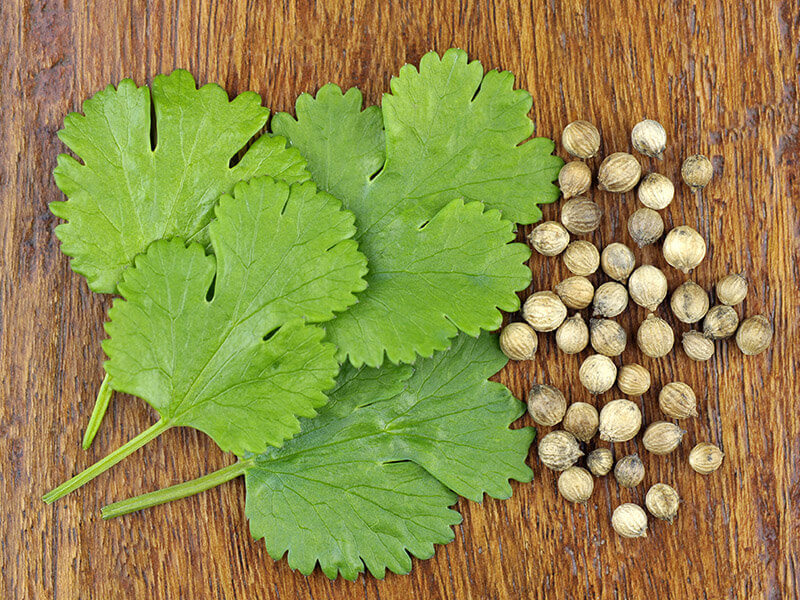
It is difficult to find a perfect replacement for coriander because this spice has such a unique flavor. Think of it as a delightful blend between a hot serving of curry and a bunch of fruits in addition to a nice crunch that makes it super fun to chew.
When ground, the seeds release an even more intense aroma, providing your yummy dishes with a perfect finishing touch. You can use this spice with pretty much everything, with stellar examples including curries, marinades, and even desserts.
12. Sumac
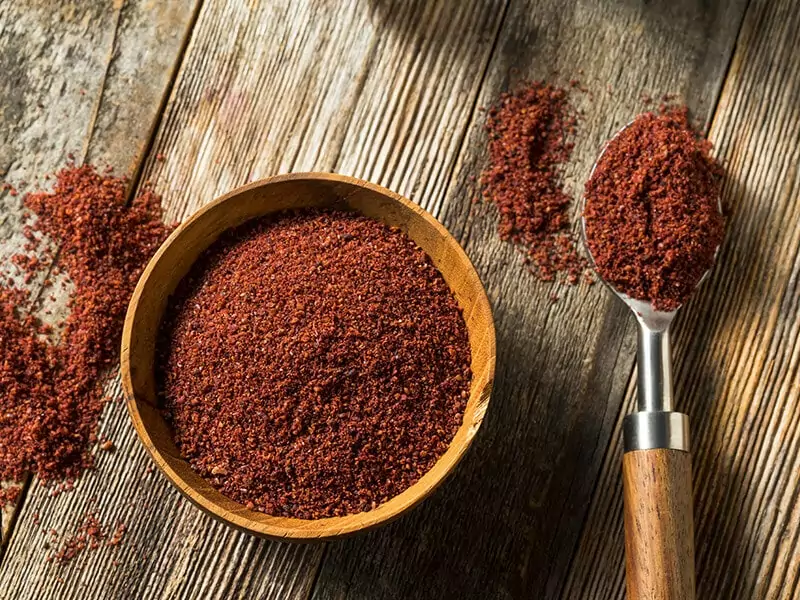
Although sumac is criminally underrated, you will still want to add it to your kitchen rack. This spice is a member of the Anacardiaceae family, perhaps the most well-known, and is a bright addition to grilled meat and vegetable dishes.
In particular, sumac opens up with an acidic flavor, followed by a fruity profile that rounds out the overall taste. Adding to its strong point, the spice features a deep purple-red hue that can enhance the curb appeal of your dishes significantly.
13. Mace
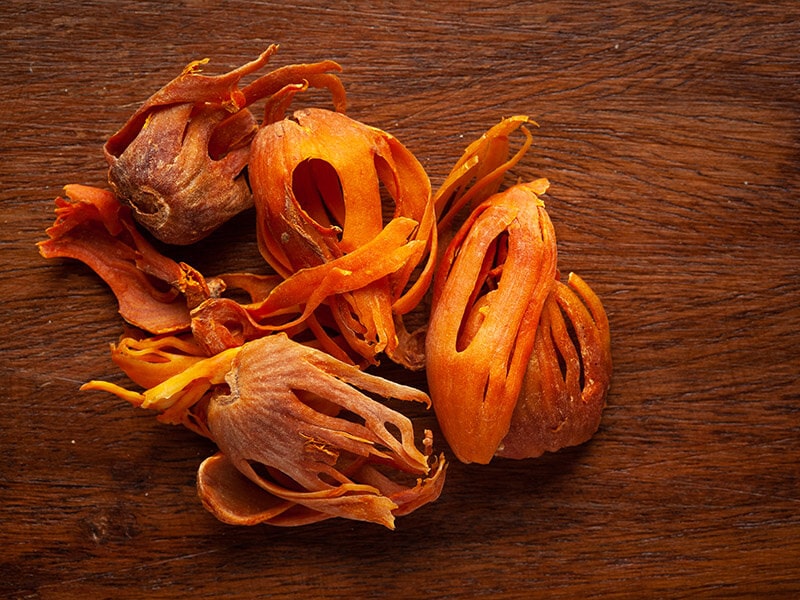
When combining mace with cinnamon, you have an excellent alternative for galangal. But do you know that this spice shines best when on its own? A key spice in Asia, the Caribbean, plus some other European cuisines, mace is praised wherever it goes.
Here’s a fun fact: mace is actually the outer layer encasing the nutmeg seed. Hence, it has a taste that closely resembles nutmeg, which yields exceptional flavors when incorporated into stews, grilled items, and baked goods. The spice’s health benefits are also considerable.
Make Your Dishes More Drool-Worthy With These Aromatic Spices
Spices also have the power to stimulate your appetite. At the very first whiff, they will capture the attention of your family and friends, keeping them entertained until the very last spoonful. Without further ado, let’s have a look at the following aromatic spices.
14. Turmeric
Turmeric is neither too strong nor too weak. The bright-hued spice has this distinctive earthy bitterness that makes it stand out in plenty of dishes, sometimes outshining other elements if you go overboard.
Hence, if you don’t know too well about this spice, perhaps it’s better to find options similar to turmeric. Another way to mellow out its potent characteristics is to use them in desserts such as chocolate, cupcakes, or chia pudding.
Here’s what turmeric has to go through before reaching your hands.
15. Saffron
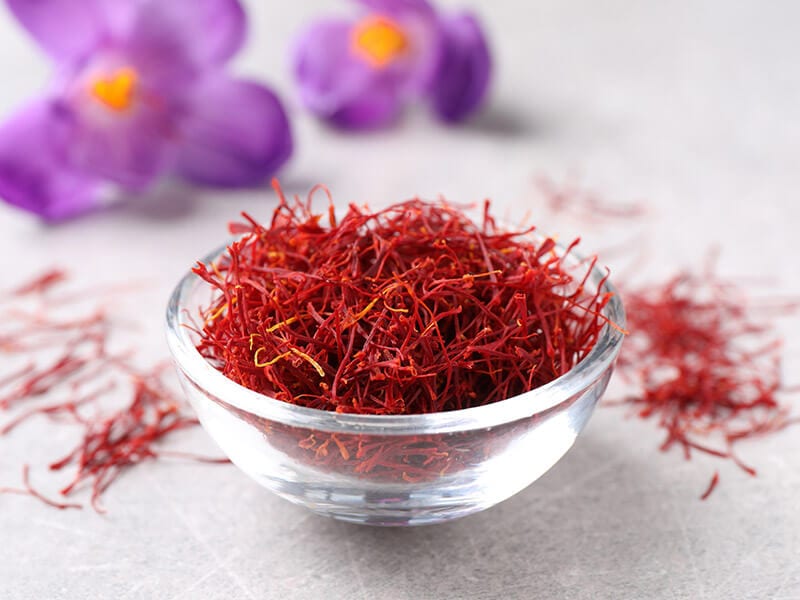
Not just you, but almost everyone has at least pondered about the taste of saffron and why it is so expensive. To harvest saffron, farmers must carefully pluck out the stigmas using a pair of tweezers, and this procedure can last for several days.
In contrast, cooking with saffron is a pleasant experience because the spice yields such soft, earthy aromatics. You can use a pinch of it right away, but some additional prep like toasting, boiling, or simmering can bring the best out of it drastically.
The truth about the exorbitant price of saffron will leave you speechless.
16. Cumin
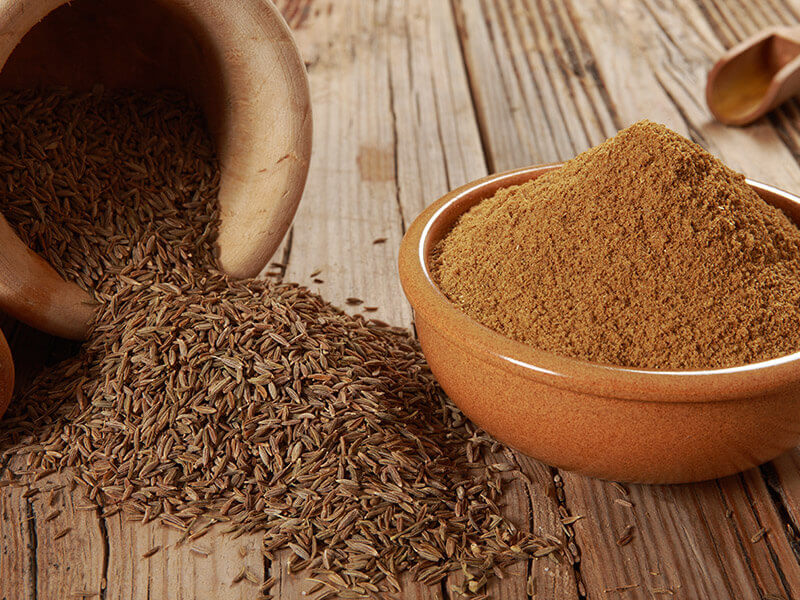
Does cumin even taste good, and will it overpower other ingredients in your dishes? Yes and no. Often mistaken for caraway seeds, which also belong to the parsley family, cumin stands out on its own with distinctive flavors and a bittersweet aroma.
Cumin does more than just give your taste buds a good time. Its health benefits are endless; to start with, the spice improves digestion, regulates blood sugar, and contains a rich amount of iron and other essential nutrients.
17. Star Anise
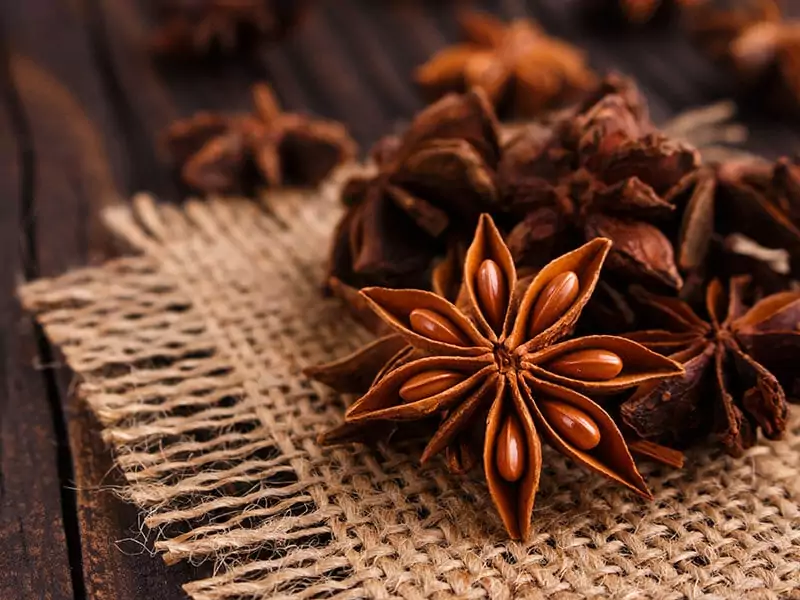
Immerse yourself into one of the best culinary experiences with star anise, an ingredient with depths of sweet, licorice-like flavor. However, don’t mistake licorice with star anise, as they’re two different plants. The spice is a key player in dishes like pho or biryani and drinks like masala chai, a refreshing spiced tea originating from India.
Star anise is of Chinese origin and has been put into use for more than 3,000 years, with early applications as a medicine. Not until the late 1500s did this spice be discovered by a sailor, who later brought it to Russia and other nations. The rest is history.
18. Caraway Seed
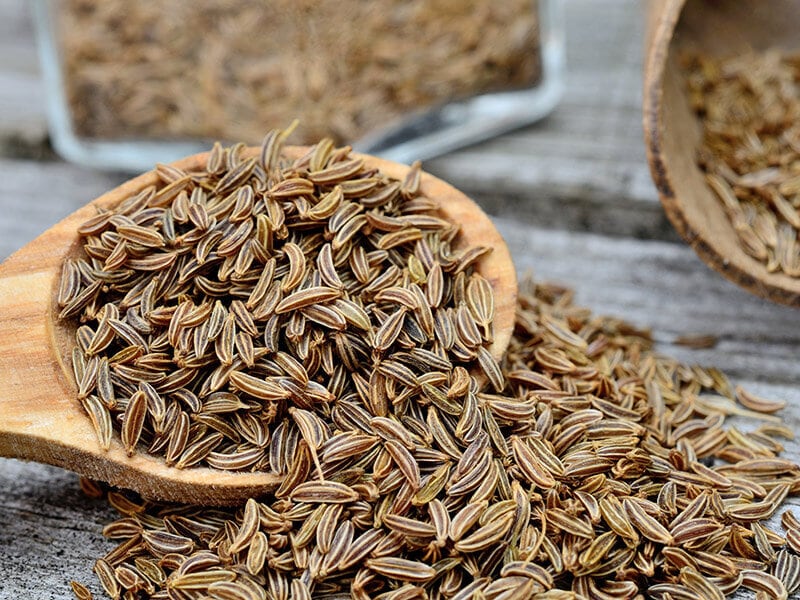
What else do you know about these seeds except that they can fit in the absence of star anise? Caraway seeds are much beloved on morning toasts; waking up your senses with an earthy sweetness, the seeds continue to deliver subtle citrusy and peppery nuances.
If you wish to bring out its earthy character, even more, don’t hesitate to give them a toasting treatment. Then, add a pinch to your tomato soup, mix them with cheese dip, or let them join the fun with your batch of cookies.
19. Clove
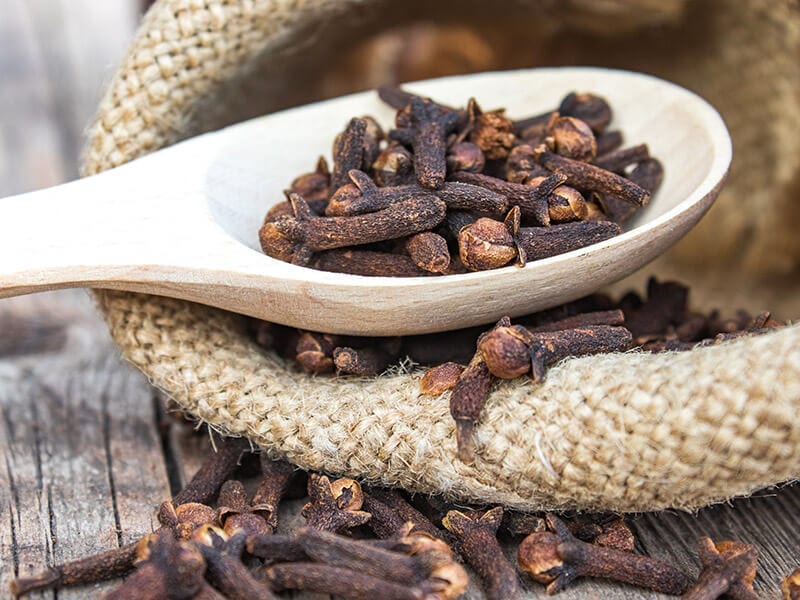
Whole or ground, clove knows how to keep everyone’s attention with its pungent aroma. The spice is sourced from the flower buds of a tree in the myrtle family and has varied uses, both culinary and non-culinary.
With its warm, sweet, and noticeable flavor, clove is highly welcome in many dishes. To start with, seasonal desserts like pumpkin pie cannot be done without it. People also use it to jazz up meat, curry, and rice dishes, along with warm beverages like mulled wine or chai.
20. Nutmeg
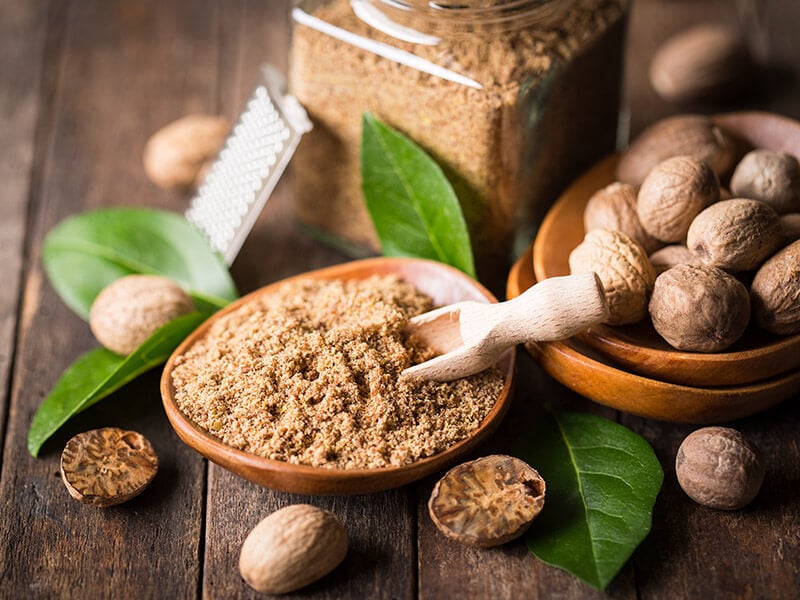
If you have been cooking with nutmeg, you know this one’s a keeper. Sprinkle it over a warm bowl of oatmeal, and the unmatched flavor of nutmeg is more than enough to kickstart your morning. Otherwise, bake a batch of muffins with it or add a dash of it to your cup of eggnog.
Originating in Banda Islands, Indonesia, nutmeg is still heavily produced in this region, along with India and other hot climate zones. In the past, people took advantage of its warm aroma to make sachets and incense. Medicinal applications of nutmeg were also well-known.
Did you know that nutmeg was the reason behind a war?
Wow Your Family And Friends With These Flavorful Spice Mixtures
What happens when you combine some of the spices mentioned above? The result will blow you away! Have a look and see what’s in store for you in this section.
21. Pumpkin Pie Spice
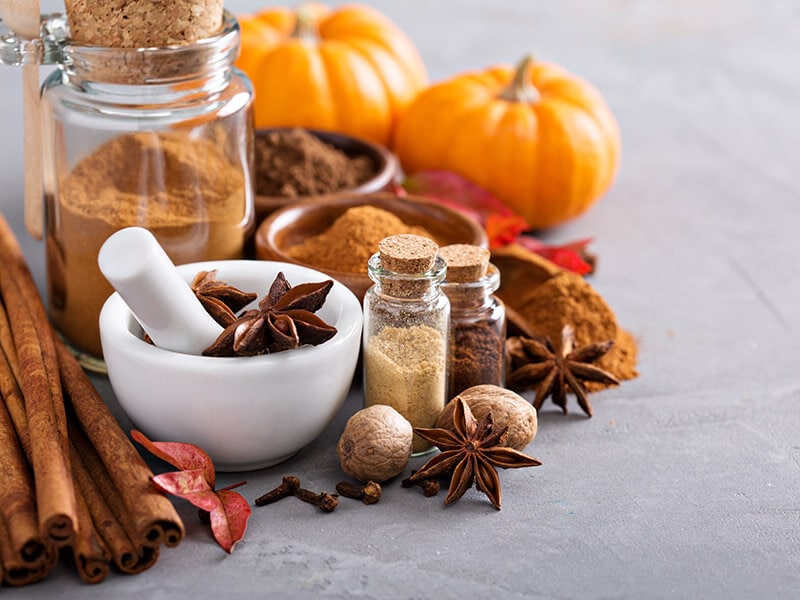
This spice blend is made for the holiday. It consists of cinnamon, clove, allspice, ginger, and nutmeg, with a ratio that can be adjusted based on your taste preferences. No one can confirm its origin, but most people give credit to Dutch East India Company.
Regardless of the name, this spice blend can help you more than just bake a pumpkin pie for the holiday season. Whether homemade or store-bought, you can sprinkle it on pasta, add it to your coffee, or stir it into pancake batter.
Don’t hesitate to make yourself a jar of pumpkin pie spice!
22. Jamaican Jerk
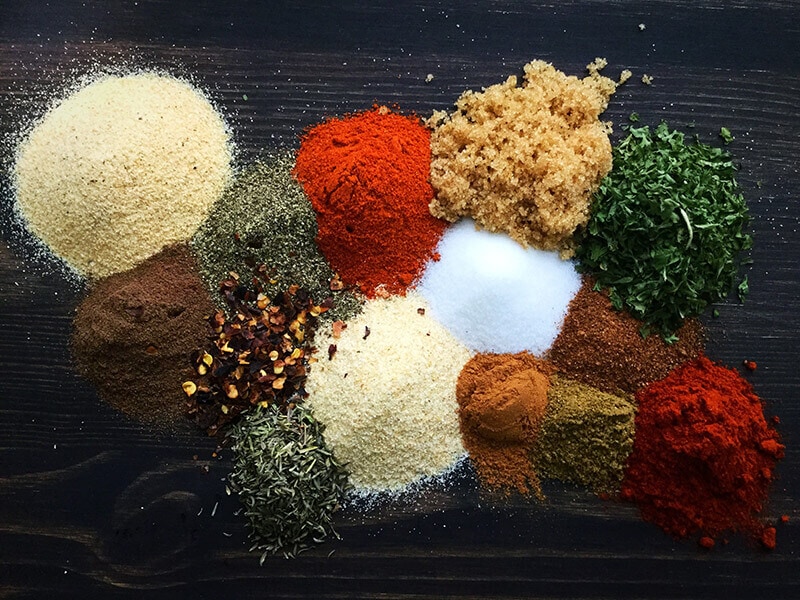
Also referred to as jerk spice or jerk seasoning, Jamaican jerk was brought to the land by the Arawak Indians over 2,500 years ago. The two main elements of this spice blend are allspice and Scotch bonnet peppers, plus secondary notes from other herbs and spices.
Once assembled, the ingredients are blended until a coarse powder is formed. The result will turn out incredibly fragrant, with the heat ranging from mild to very hot. Jamaican jerk is great for marinating meat, but you can stir it directly in dipping sauces or other dishes, too.
23. Chinese Five Spice
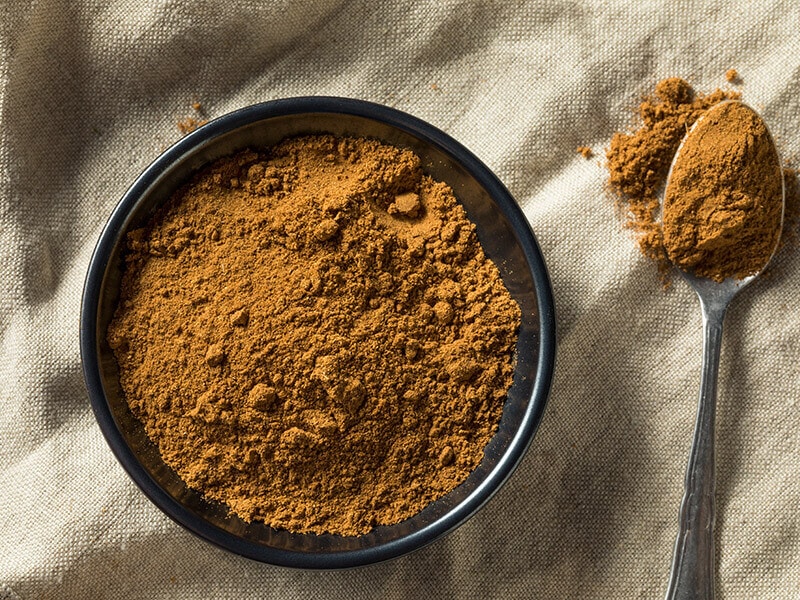
A delightful combination of cinnamon, fennel, star anise, cloves, and Szechuan peppers, you cannot help but want to bring it in whatever’s cooking in your kitchen. Here, cassia cinnamon is used, while Szechuan peppers can be replaced with whatever you like.
From the name, you can tell that a plethora of Chinese dishes involves the use of this mixture. However, it is also the essence of Vietnamese, Taiwanese, and Hawaiian cuisine. To find the perfect substitute for this spice blend, graham masalat or baharat is worth considering.
24. Cajun Seasoning
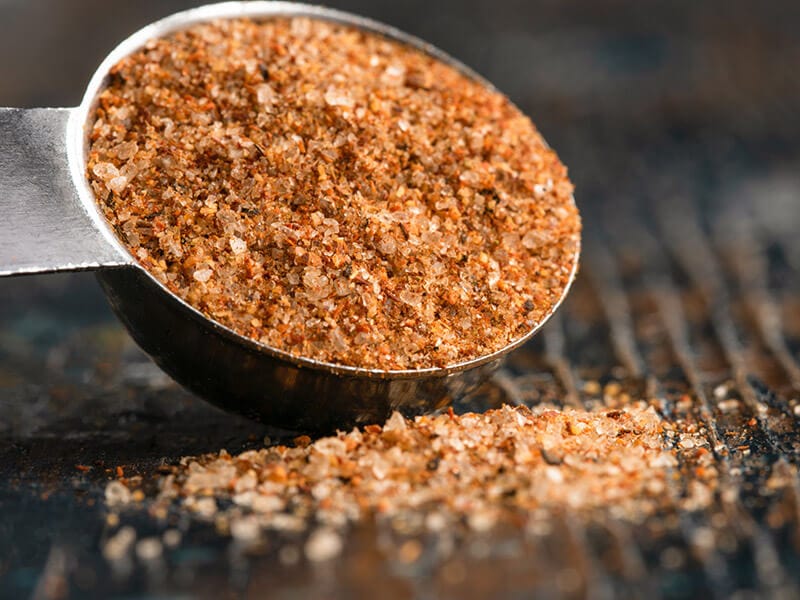
Without Cajun seasoning, your delicious, crowd-pleasing Cajun recipes will lose their charm. It is a spice blend made up of paprika, cayenne, garlic powder, onion powder, with some extra ingredients that can be included or excluded depending on taste preferences.
Cajun seasoning takes a bold turn in various dishes with its spicy, zesty flavor depths. It also offers extra visual appeal with its signature red hue and a rustic aroma that works well with a myriad of ingredients, from red meat to vegetables.
25. Curry Powder
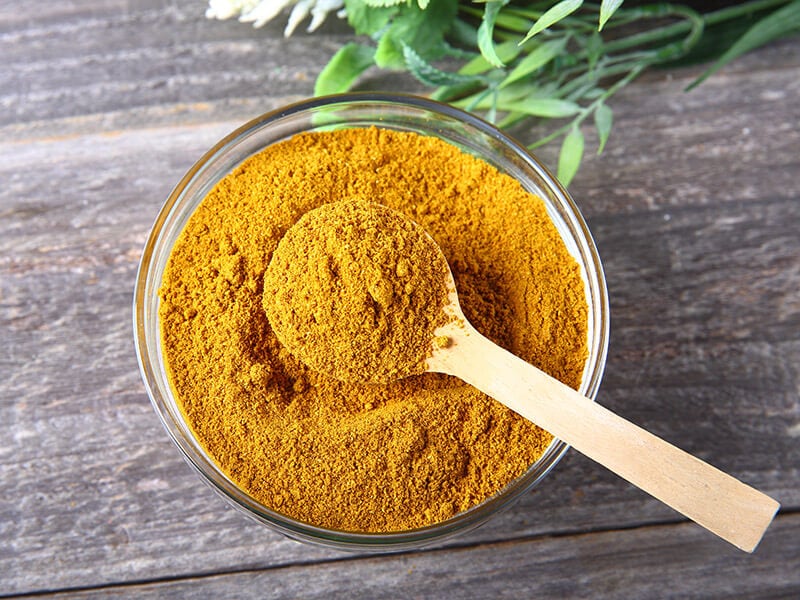
Don’t let the name of this spice blend deceive you. While it’s true that it’s a superstar in many curry recipes, you can also use it to upgrade your fried rice, hearty stew, roasted vegetables, and even popcorn!
Surprisingly, curry powder owes its roots to the English colonists, who took part in the Indian spice trade as early as the 18th century. Like other spice blends, the ingredients (except the core ones: cumin, ginger, turmeric, and black pepper) can be modified to personal taste.
26. Garam Masala
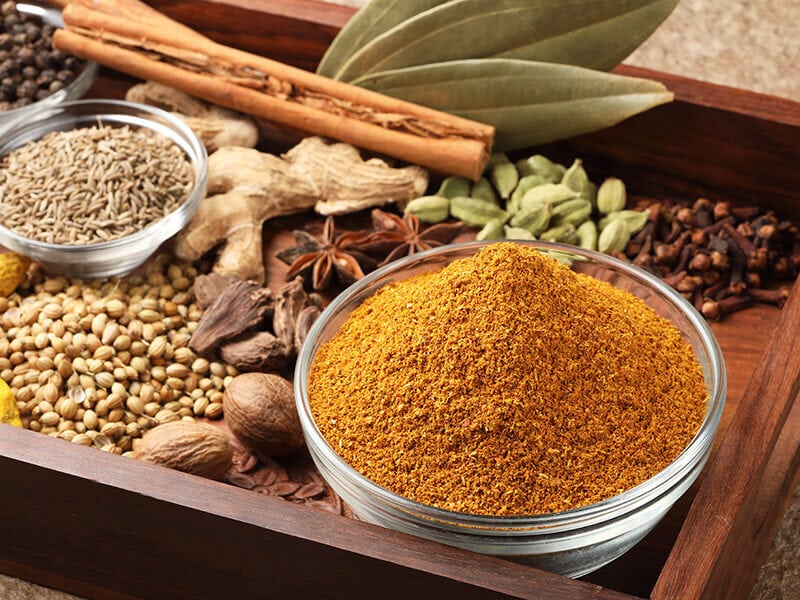
Similar to curry powder, garam masala establishes a strong bond with Indian cuisine, mainly in curry and chicken dishes. The spice blend is believed to originate from north India, with its first use in the 13th century.
Whatever goes in or is left out, garam masala is loaded with such fiery heat that it can keep your stomach warm during the winter days. Common elements include fennel, cloves, cumin, and mace, which are usually toasted in advance to yield more flavors.
27. Italian Seasoning
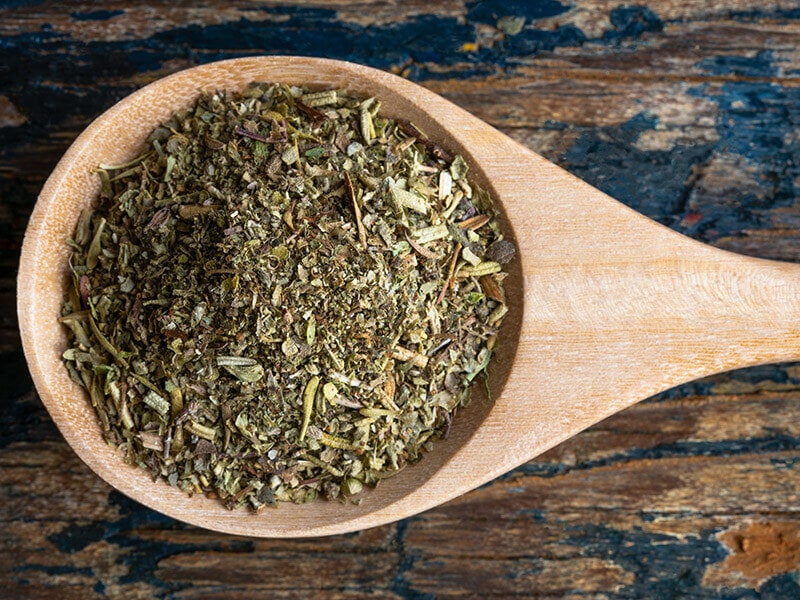
Italian seasoning has stirred up much controversy regarding its origin. Despite the name and the debate whether which region of Italy has invented it, many people insist that it was made by the Americans.
Regardless of its birthplace, Italian seasoning now graces its presence in every kitchen. This spice blend contains a bevy of fresh culinary herbs like basil, oregano, thyme, rosemary, and sage. As per the name, it’s a match made in heaven with Italian dishes like pizza or pasta.
28. Old Bay Seasoning
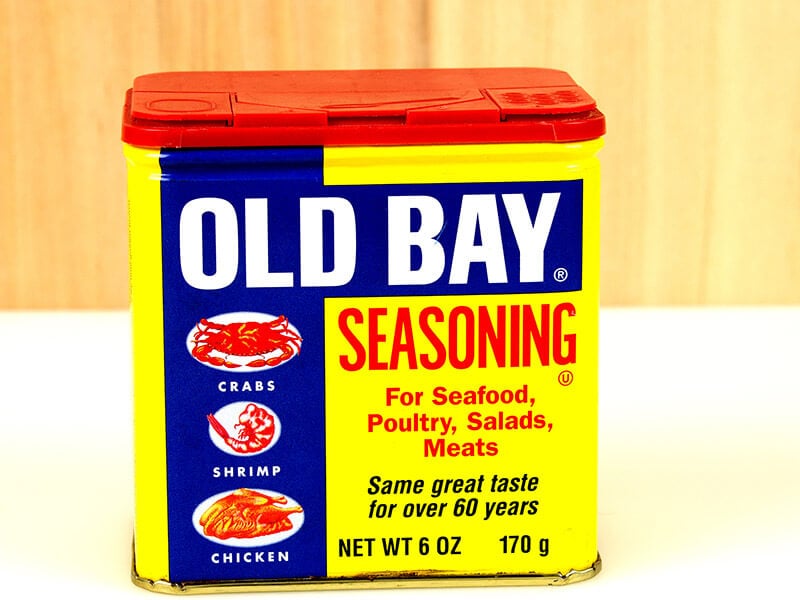
Thanks to McCormick & Company, Old Bay seasoning skyrocketed to fame. However, it was a German refugee named Gustav Brunn that brought this spice blend to life. Nowadays, Old Bay Seasoning is everywhere, from small corner shops to large grocery chains.
With a total of eighteen herbs and spices, you may think the flavors will clash. However, they go along with each other perfectly, starting with spicy, peppery notes. A smoky hint comes in, turning your boring midweek meals into a real deal.
Other Amazing Spices To Add To Your Cooking Arsenal
These spices may fly off the radar, but that does not mean they are bad! Give them a shot, or you will regret it!
29. Fenugreek Seed
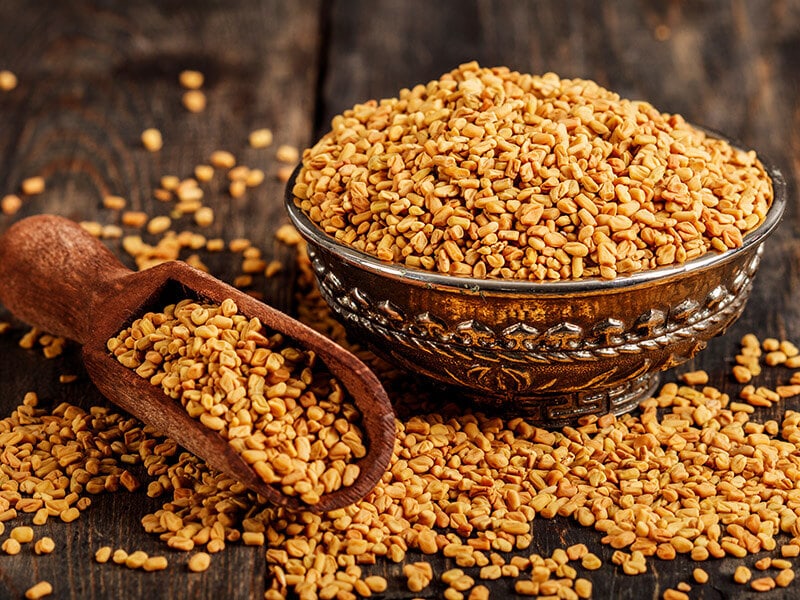
For a dish that can whet your appetite, you need fenugreek, a vegetable that originates from the Near East. While its leaves are treated as a herb, people use fenugreek seeds to impart bold flavors to salad, curry, and meat dishes.
Talking more about the seeds, they are rather bitter and firm to touch. Therefore, to bring out their best selves, soaking or toasting the seeds before serving is highly recommended. They can also be ground to make dry rubs or be a part of other spice blends.
Sprouting your fenugreek has never been this straightforward!
30. Ajwain Seed
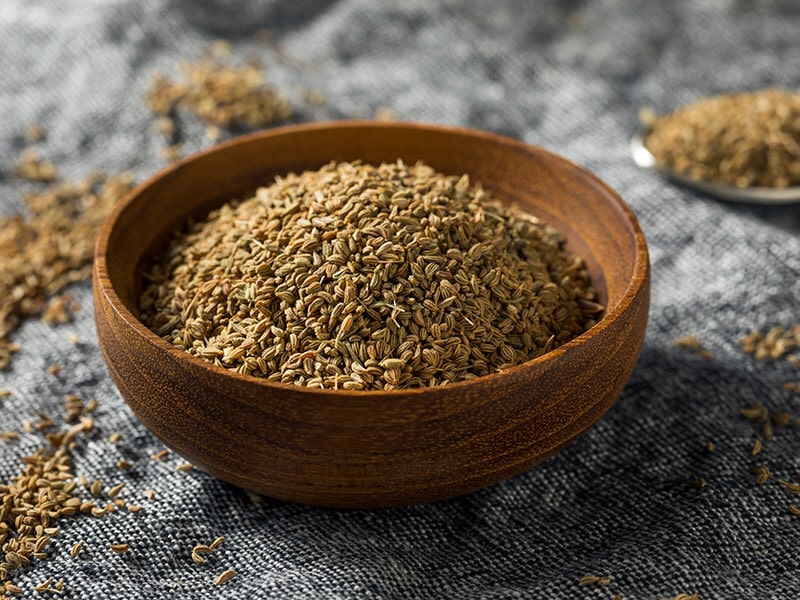
Also known as carom or oomam, these seeds are actually fruits of the ajwain plant. They are redolent of thyme, to some even more aromatic, with a taste reminiscent of oregano or anise seeds. Like fenugreek seeds, they are lightly toasted to become more fragrant.
With health benefits like preventing infection and treating digestive issues, these seeds are a crucial part of many cuisines, such as Indian. They make excellent fillings for pastries or as a tempering for traditional recipes like dals and pakoras.
31. Dill Seed
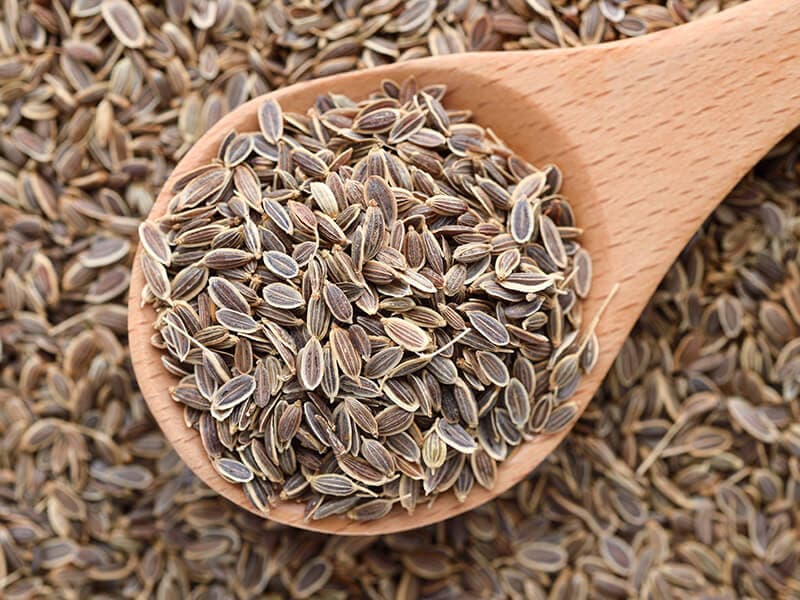
Moving on, you have dill seeds, which are also members of the Apiaceae family. They might be little yet packed with big flavors: a caraway flair underlined with slight hints of anise and is followed by a distinctive bitter finish.
Dill seeds are highly adaptable in the kitchen. Making pickles with them is old but gold; if you want a more creative spin, top your bread, soups, or vegetable dishes with a sprinkling. They can be used whole or crushed depending on what’s cooking.
Don’t miss out on these historical facts about dill seeds.
32. Asafoetida
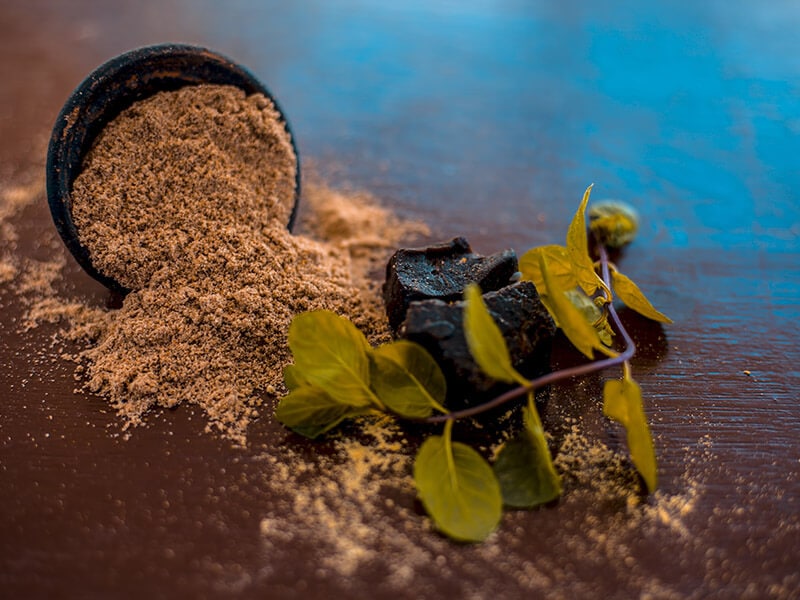
Another Indian spice that’s full of characteristics, asafoetida stands out from the crowd with a distinctive pungent aroma, which explains the nickname “stinking gum.” When sprinkled on a dish upon cooking, the smell will take over your house and remain for hours afterward.
Asafoetida has a smooth flavor profile with subtle notes of leek, garlic, and similar spices. No-fuss if you happen to add more than needed: this spice won’t overwhelm the overall flavor of your dishes, which is why it’s often used to prop up other spices.
33. Grains Of Paradise
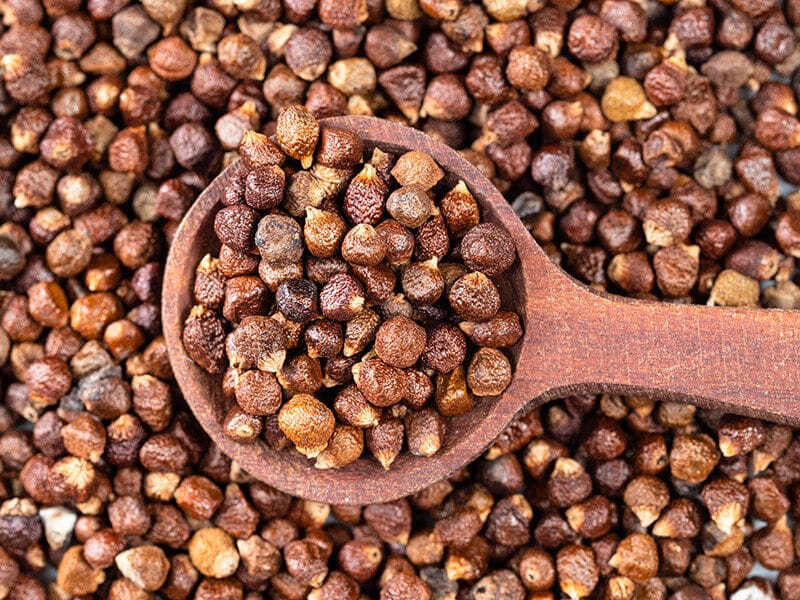
This kind of spice has one of the most gorgeous names that makes up for its modest look. At first sight, it looks like peppercorns, but the taste is far more complex. Adding to the peppery nuances is a subtle touch of jasmine, hazelnut, and citrus.
Like black and white peppercorns, grinding is optional if you want something more robust. In small amounts, grains of paradise can yield much warmth, which is gladly received in lots of dishes. And did you know that the chemicals in these seeds can even kill bacteria?
34. Juniper Berries
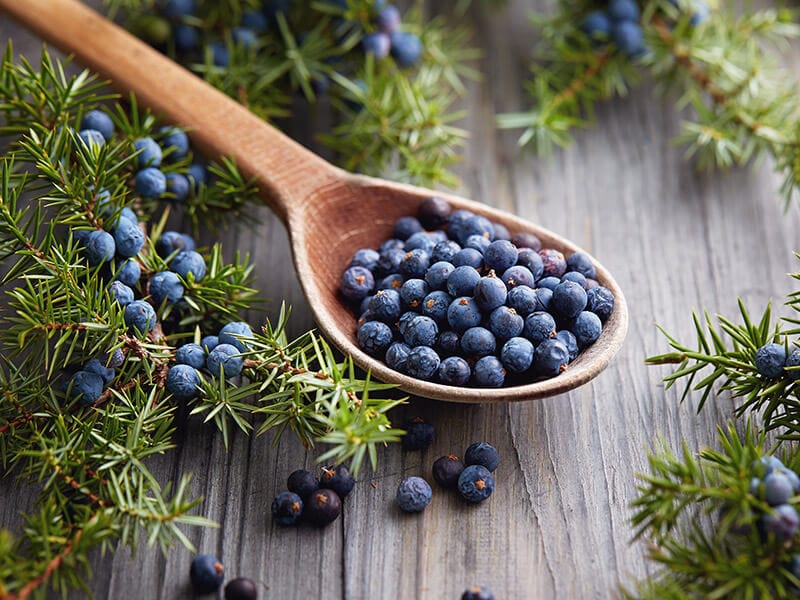
It’s a shame if I forget to mention juniper berries, a spice that forms an inseparable bond with gin and European cuisine. While these berries are a good source of vitamin C, those derived from species like Juniperus Sabina are inedible, so don’t go pick them in the wild.
If you are a frequent gin drinker, you should get an idea of how this spice tastes. It opens up with a fresh, piney taste, which mellows out with a pleasant hint of citrus. When incorporated into your dishes, it becomes more pungent and guarantees to make everything tastier.
35. Vanilla
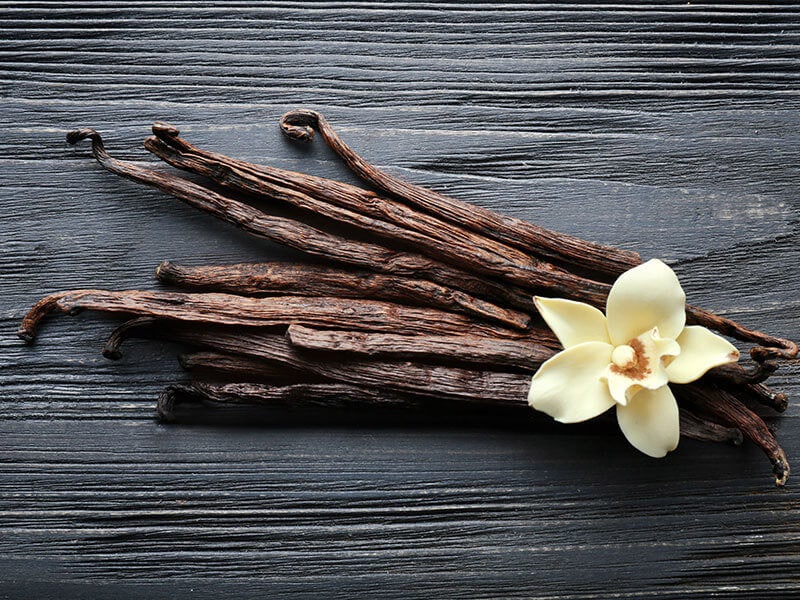
When thinking of vanilla, most people immediately think of it as a safe choice, say, when you go grabbing some ice cream. Yet, you can go bold with vanilla and not just with desserts. It’s a match with cheese, marinades, and meaty dishes.
Vanilla comes in different forms, so it’s important to know which one to use. Vanilla extract is commonly used, whereas vanilla beans offer the strongest flavor. Then, there’s a vanilla paste, a perfect in-between that allows you to enjoy the best of both worlds.
Learn more about vanilla and its exquisite flavor profile now.
Spice Up Your Life!
Without these divine types of spices, granted that cooking is less fun. After this post, I’m sure that you have picked yourself some new favorites to add to your spice rack. They are the key that helps you unlock the gates to the world of flavors!
If you enjoy my post, don’t hesitate to link it to your loved ones; I’m positive that they are also in need of a flavor boost! As usual, the comment section below is where you share whatever you want, so go ahead and write down what’s on your mind!
